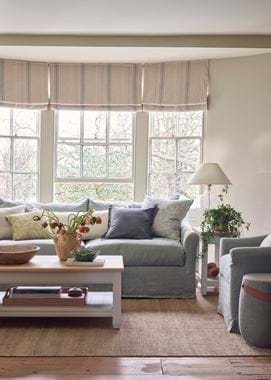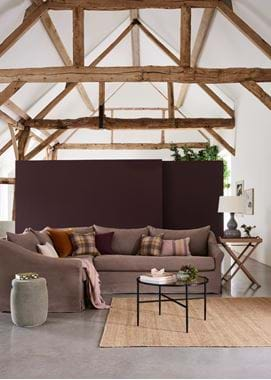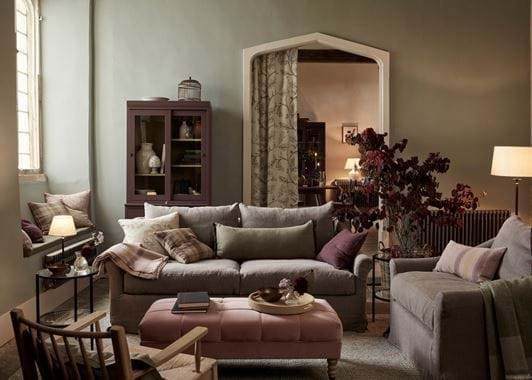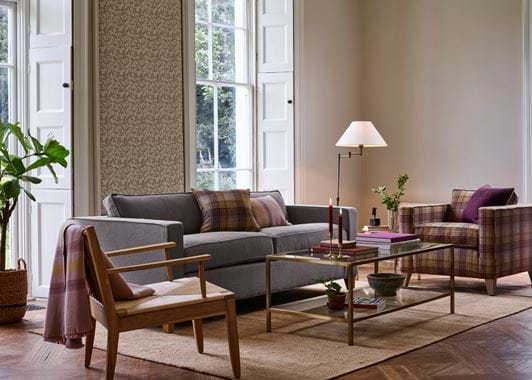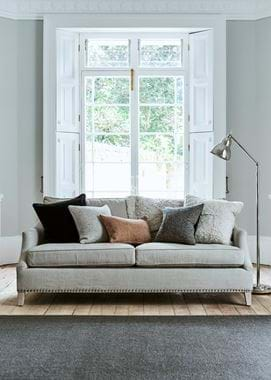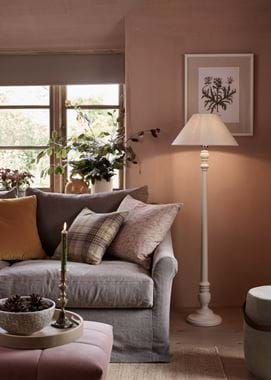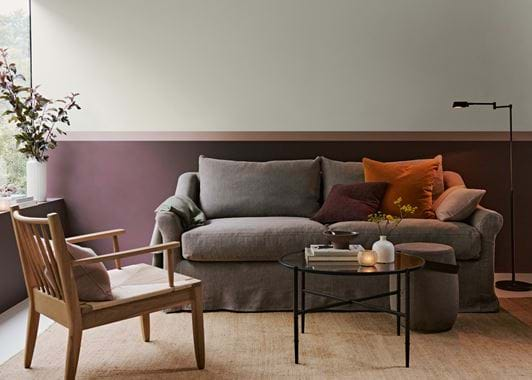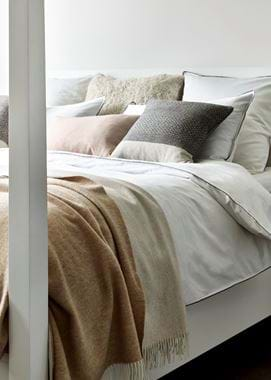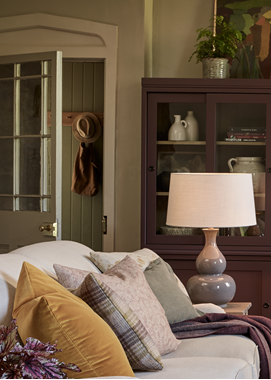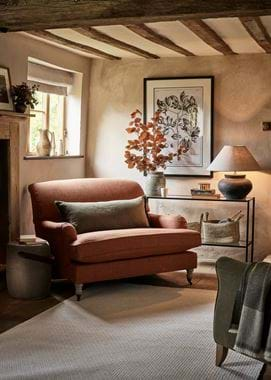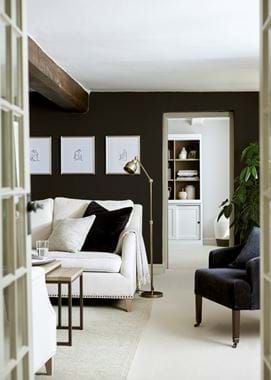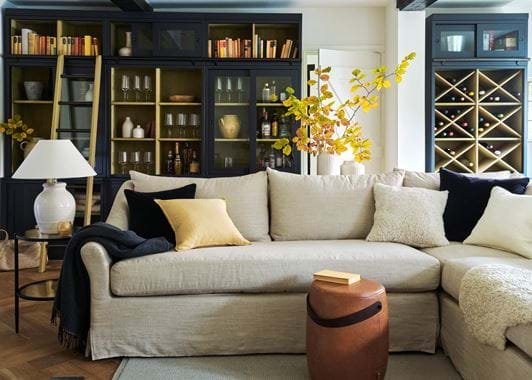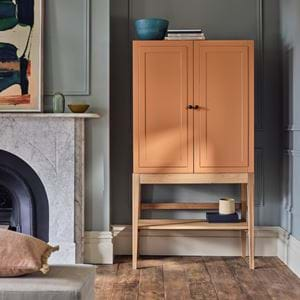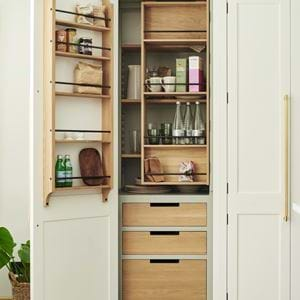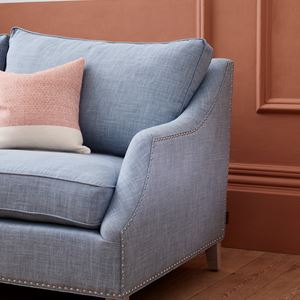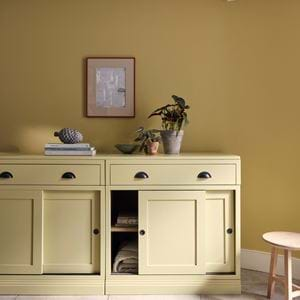Collecting cushions: how many is too many?
Collecting cushions: how many is too many?
A stylist’s best friend for good reason, the pockets and punches of colour and softness created by cushions have great effect on an entire room’s look and feel, not solely on the surface they touch. Small but mighty, textured and tonal, able to be layered yet equally as able to keep their own company, how is it then that you decide the selection to use on your sofa, armchair and bedspread? How do you know when many becomes too many, and how do you pick out when contrast teeters into clashing?
Cushion quantities – even numbers or odds?
One of the rumours you hear a lot in interior design is that things work best in odd numbers. Even numbers tend to lead to symmetrical arrangements, which can result in a space with a very uniform, straight-laced atmosphere. Asymmetry, on the other hand, means the cadence isn’t so measured and predictable, and in turn, that helps your room come across as relaxed – the cushions an open invitation to lean back.
But, if you like the crispness and balance of a symmetrical cushion layout, there are ways to ensure they don’t seem too stiff. For instance, if no two of the symmetrically-arranged cushions are exactly the same, the resulting aesthetic is much less formal than you might expect. Stick to mirrored sizes but choose different fabrics for each side.
In brief, choose odd numbers for a more obviously relaxed look and even for the opposite.
Cushion colours – should you stick to just two or three tones?
As with most topics in interior design, there aren’t too many hard and fast rules. And those that there are, ask to be flexed. So, when it comes to the colours of your cushions, it would be too short-sighted to say that a maximum of three tones is as high as you can go.
The more colours you combine however, the more necessary that it becomes for them to be in harmony. Four or more at-odds shades and the effect is overwhelming. The neutral Eva sofa (upholstered in Harry Cloud) in front of the tall windows is evidence of that with its total of four, tonal colours – hues of navy, grey, cream and orange. You can also help the cushions in this look knit together further by choosing some with pattern or mottling where the colours repeat.
Keep the numbers lower though, and the opportunity to cause a stir is there for the taking. Choose just two colours for your cushions and you can make them complementary shades (those that sit on opposite sides of the colour wheel) without things feeling too over the top.
That said, if you want to keep your cushion look understated and harmonious, do. If you’re playing off just the one tone, creating depth by choosing some more pigmented cushions and some paler will stop things from falling flat. A mix of light and dark neutrals, maybe, or all colours within the orange family, such as our fabrics in Apricot, Burnt Sienna, Rust and Fox, with a dash of pale pink like Imogen Oyster pink too as your lightest shade.
Cushion positioning – keep them together or spread them out?
One of the few rules not to be ignored on the other hand, is to always avoid putting your cushions on a point. You’ll seldom find a stylist who advocates otherwise. Angling your cushions so that the point faces down and they cut a diamond form rather than the square that they should be, is a way to instantly make your room appear outdated.
Whether you opt to group cushions in the middle of the sofa leaving the ends empty, dot them along the full length, position one or two against the headboard of your bed while another rests in front of your pillows, or push your cushions to a sofa or armchair’s edges leaving a chasm in the centre, is purely a matter of personal choice. Experiment, see which suits your taste most, and change them up from time to time so you can appreciate the difference each layout has on your room’s character. This is the best way to learn which option is to your liking.
Cushion sizes and shapes – must there always be a mixture?
Lay cushions of all the same dimensions onto a bed or sofa and you’ll soon see how flat it feels. Even in different colours and materials, the repetition of the same size and shape is much too regimented.
Just like with colour, the aim isn’t to have every cushion in a different size, but for there to be some variation to keep the eye entertained. Move from oversized to slightly smaller and then add in an oblong cushion to play with shape and avoid the diminishing sizes from looking too Russian Doll-inspired.

